Iraq: The changing face of Baghdad’s historic neighbourhoods
Concrete skeletons now punctuate a skyline previously peppered with palm trees as flats gradually usurp old homes.
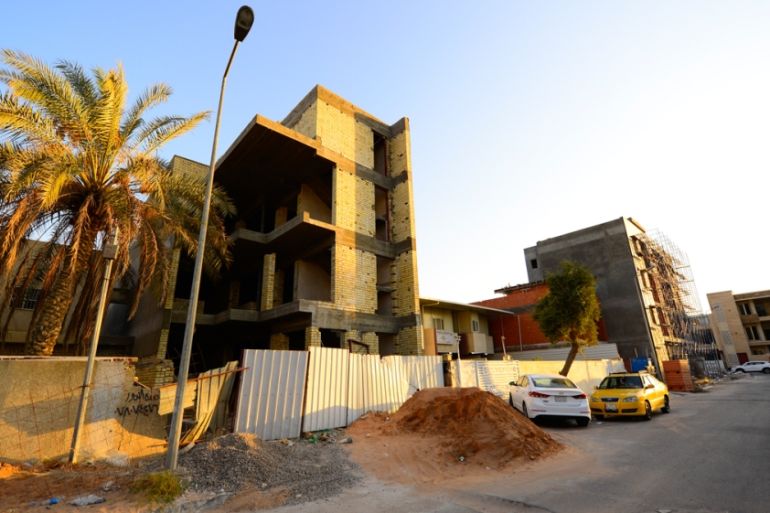
Baghdad, Iraq – A relentless cacophony of construction noise rings out across Harthiya, heralding the unstoppable encroachment of a growing megacity on this once quiet neighbourhood of central Baghdad.
Concrete skeletons punctuate a skyline previously peppered with palm trees, as apartment blocks gradually usurp sprawling one-family homes.
Keep reading
list of 4 itemsEcuador weighs security, international arbitration in latest referendum
‘Triple spending’: Zimbabweans bear cost of changing to new ZiG currency
Boeing hit with 32 whistleblower claims, as dead worker’s case reviewed
When newlyweds Hind Jameel and Waleed Ahmed first moved to Harthiya in the 1970s, their quaint bungalow encapsulated Baghdad’s look at the time: sand-coloured brick buildings with arched walkways surrounded by lush, spacious gardens. Inside, wood-clad walls, hand-painted mirrors and antique furniture transplant visitors back to a time many remember as Baghdad’s golden era.
Half a century later, the elderly couple’s home is among a few of its kind left in a neighbourhood they barely recognise.
“Before, every house had a garden. Now, it’s all concrete,” lamented Ahmed, 82, who used to work for the ministry of trade prior to his retirement. “Everyone is building new houses with fascinating things, but the area is becoming worse.”
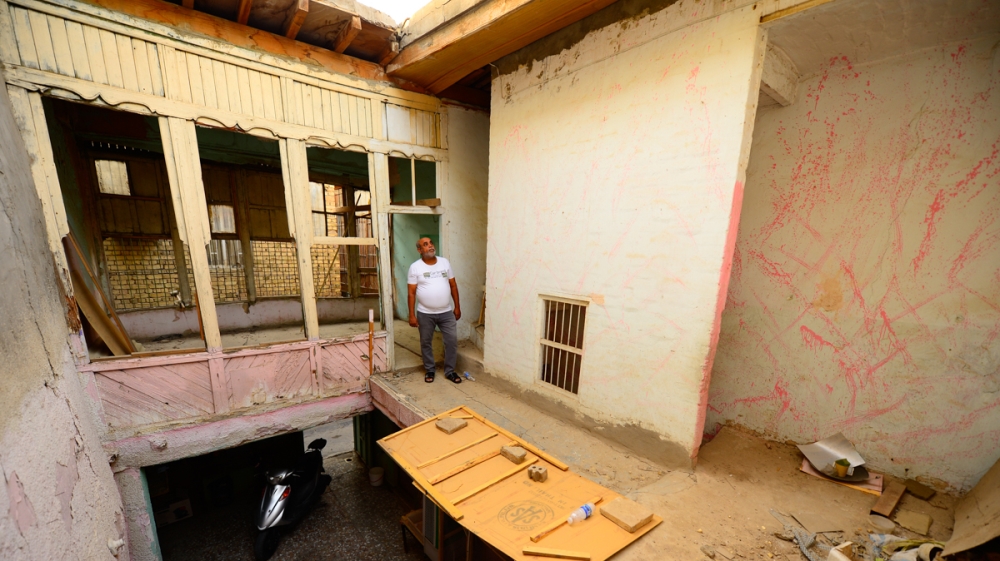
Harthiya, like much of Baghdad, has been irreparably altered amid a post-2003 construction boom that has gone largely unregulated. Driven by commercial interests and enabled by a dysfunctional state, it has gradually chipped away at Baghdad’s architectural heritage and upended the city’s urban fabric.
Instead of expanding outward, the city is cannibalising its old districts.
Eight-hundred-square-metre plots have been carved up to accommodate multiple homes, with concrete swallowing every inch of greenery to make space for additional housing. Traditional building techniques suited for Baghdad’s hot climate have been replaced with cheaper and glitzier designs.
High walls equipped with cameras loom where low fences once conveyed a sense of familiarity. On Al Kindi street, the avenue that cuts through the neighbourhood, residential homes have long given way to multistorey clinics, medical supply stores, and malls.
The rapid rise in population density risks making the area unlivable in a city that already ranks rock-bottom on Mercer’s quality of life index. In the afternoons, Harthiya’s narrow streets are clogged with traffic. Water is running low, and during sweltering summer days, heat radiates from the concrete long after sunset, as there is no longer enough greenery left to absorb it.
“It makes me very sad,” said Jameel, 79, who used to work for an insurance company. “Everything was better in the past. Not just the buildings and streets, also the social life.”
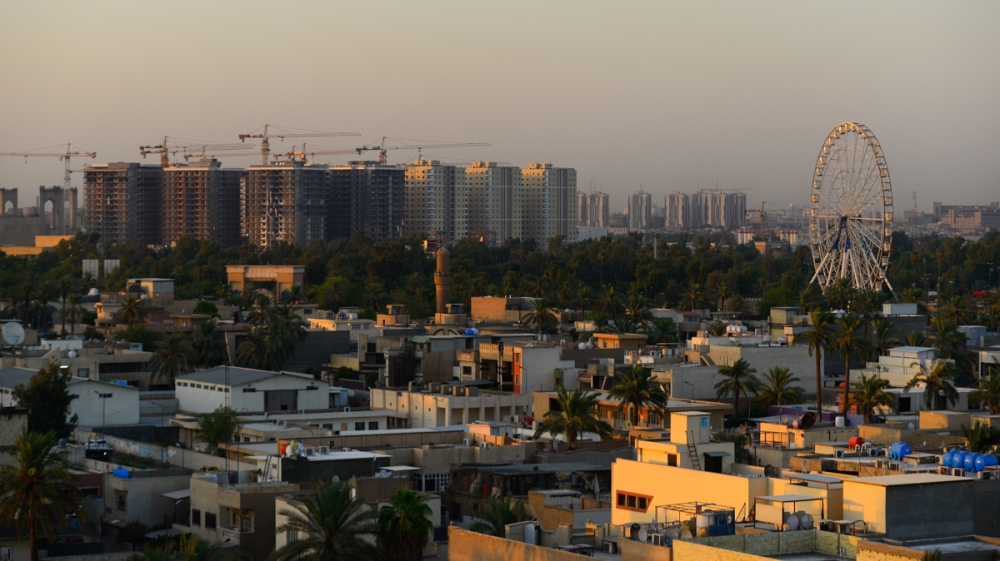
Back in the ’70s, Jameel recalled, Harthiya was mostly inhabited by university graduates and civil servants, who were granted access to subsidised plots. She knew most of her neighbours, and they often spent evenings visiting one another.
But the tightly knit community began to unravel as conflicts, and then sanctions, engulfed Iraq, prompting many educated families to leave the country.
Ihsan Fethi, an architect and urban planner, whose PhD from The University of Sheffield focused on the preservation of old Baghdad, was among them.
“Baghdad is losing its identity. The whole city is in a terrible state of decay,” he told Al Jazeera, speaking over the phone from Jordan.
Fethi used to live in Harthiya, but left after the UN imposed a crippling embargo against Saddam Hussein’s government in 1991. Fethi’s family home, built in 1954, was sold and torn down, the plot carved up to accommodate four houses instead of one.
It is a pattern that has been repeated across Baghdad with new structures frequently violating building codes that dictate minimum plot size, the maximum number of floors, and the percent of built-up area.
“It’s all illegal,” said Fethi, who used to work in the municipality in the 1980s. “The real estate developers are controlling what’s going on the ground, not the municipality.”
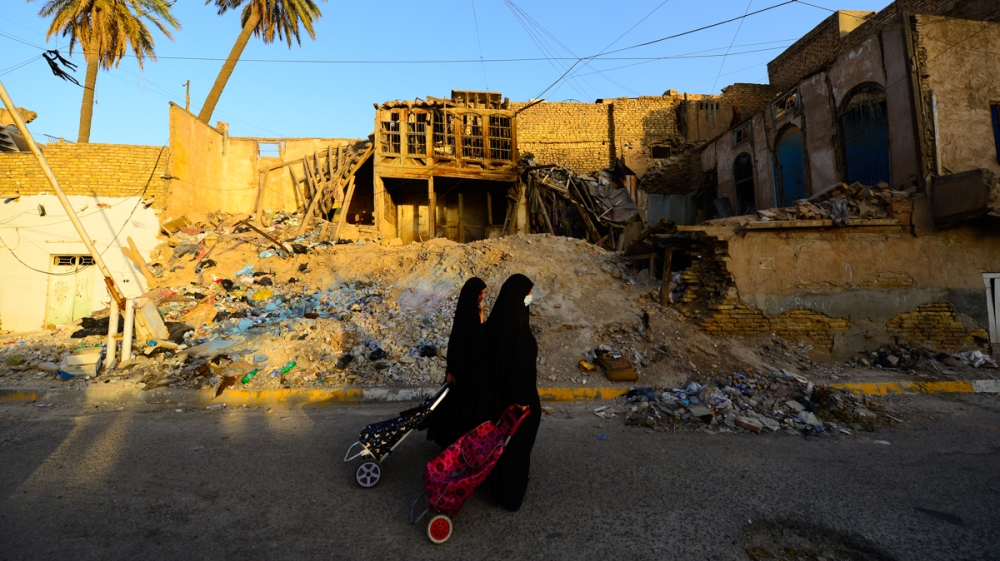
Fines for building violations are too small to serve as an effective deterrent when compared to soaring real estate prices. But the main culprit, many experts agree, is corruption, which skyrocketed in the wake of the 2003 US-led invasion as political parties tightened their grip over state institutions.
“Everybody in the municipality, from the most junior to the most senior, is corrupt,” Fethi said. “And you cannot enforce laws with corruption.”
Given the widespread nature of infractions, the municipality should be raking in substantial revenues from penalties, resources it desperately needs to fund maintenance of Baghdad’s dilapidated public infrastructure.
The municipality section in charge of Harthiya declined to speak to Al Jazeera. But a government official who spoke on condition of anonymity said only a small fraction of revenues from building penalties reaches state coffers.
A real estate agent who deals with the office on a daily basis to facilitate transactions for his clients shed light on its inner workings.
Every day, he explained, municipality workers make their rounds to monitor construction sites. When they notice irregularities – for example, a building with an extra floor – a deal is struck with the builder.
The municipality workers pocket a bribe and, in turn, reduce the official penalty to a symbolic value. The builder pays the fine and gets a receipt, which allows him to continue building.
The scheme has permeated the entire municipality, the real estate agent alleged, with each department taking a cut.
“The problem goes to the very top. Whoever was appointed by the parties has to pay their dues,” the real estate agent said, who spoke on the condition of anonymity. “There are some good people, but they can’t say anything because of the power of the parties that control the municipality.”
![Qabs Kana’an and his children walk through Iraq Gate in central Baghdad. His family moved here in 2019 from Baghdad’s Wazirya neighborhood because of better services. [Haider Hamdani/Al Jazeera]](/wp-content/uploads/2020/09/22118389527a483b862e00e595edfc4e_18.jpeg)
Old Baghdad disappearing
This is not the first time Baghdad has undergone a rapid architectural change. Repeated cycles of destruction and reconstruction have left little of its ancient heritage intact.
The city was established in 762 as the capital of the Abbasid caliphate, but the oldest house still standing dates back less than 250 years. In the 19th century, Ottoman rulers destroyed the Abbasid-era city walls to make room for wider streets, precipitating the destruction of the old city that had lain within.
An influx of rural populations in the mid-20th century further accelerated demolition of traditional Baghdadi homes.
“The new occupants of the old city had absolutely no understanding of the value of the architectural heritage of those old parts,” Fethi said.
Though poor conservation policies and lack of law enforcement are largely to blame for the disappearance of heritage buildings, intermittent conflict added to the destruction. A 1980s survey commissioned by the municipality counted 4,100 heritage houses in several old districts on the eastern bank of the Tigris River. Today, only about 900 are left.
“It brings me to tears,” said Amal Hafudh, whose unit at Baghdad’s central municipality is supposed to regulate reconstruction of heritage buildings, but which she said lacks the necessary authority and means.
More than 90 percent of heritage buildings in Baghdad are in the hands of private individuals, who have few incentives to maintain them.
“The owners want money, but we don’t have the budget to buy their houses,” Hafudh lamented.
Many end up destroying their old homes without demolition permits to then present the municipality with a fait accompli.
“They open the water for a week, and the house will collapse from inside. Or they’ll set it on fire and claim that it was an electricity spark,” Hafudh told Al Jazeera.
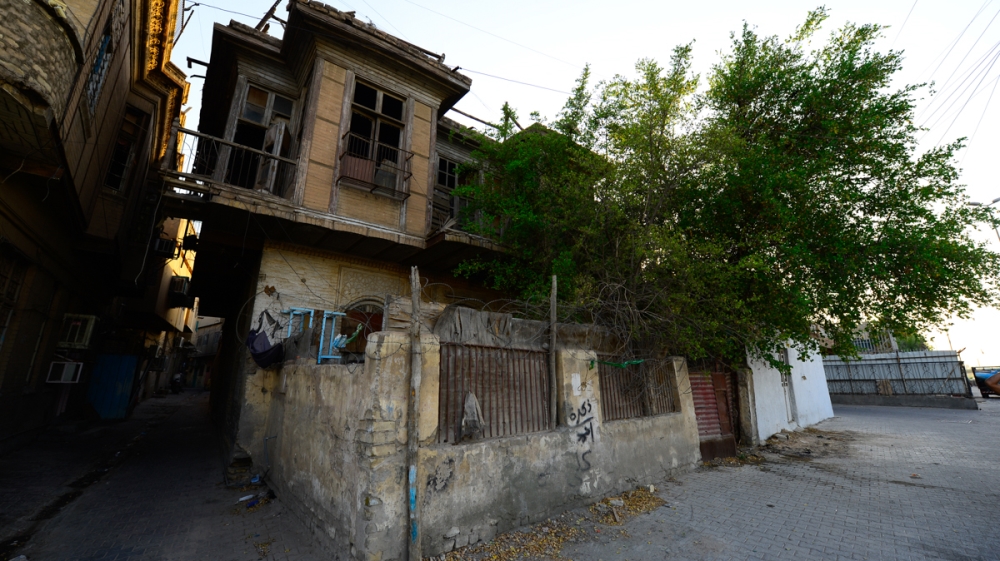
One can still get a taste of what old Baghdad looked like.
In the Shewake neighbourhood on the western banks of the Tigris, narrow alleyways are lined with houses from the early 20th century, complete with fine stone engravings, inner courtyards, and ornamental wooden balconies called, “shanasheel”.
But here, too, modern structures are gradually replacing old ones as homeowners strike a pragmatic approach towards housing.
“There’s no use in renovating,” said Aysser al-Ameri, as he points to the broken shanasheel in a house he recently bought for his son and which he plans to demolish. Ameri’s family has lived here for generations. His father and grandfather both built shanasheel, but he never learned the trade. “The expertise required to restore it back to how our grandfathers used to build no longer exists.”
Restoring old buildings is also more expensive than building a new one from scratch, and the government offers no incentives or expertise.
“It’s all in the hands of the government,” al-Ameri said. “There are some carpenters who still exists, but they are expensive because it’s all handwork. If the government provided support, then the houses could be restored.”
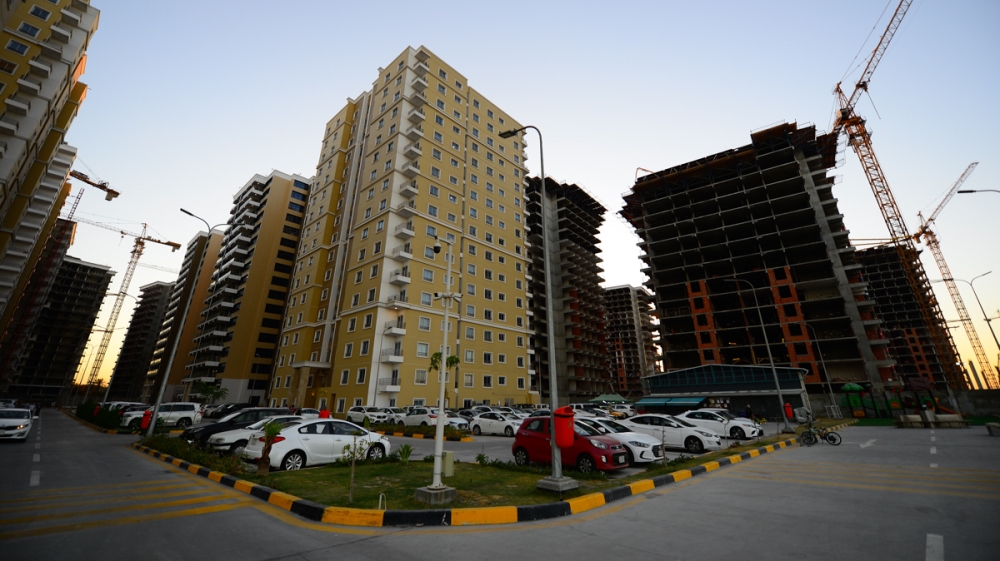
Further north along the Tigris, another jewel of old Baghdadi architecture is at risk of vanishing. Kadhumiya, named after the seventh Imam buried here, houses his eponymous shrine that draws millions of pilgrims every year.
The area surrounding the shrine has been designated as a historic area, subject to special building regulations that prohibit demolition of old buildings and that require new houses to have a historic facade to preserve the area’s look.
But walking through Kadhumiya’s packed streets, historic buildings are few and far between. Instead, newly built shops and hotels hoping to take advantage of the high footprint now dominate the main arteries leading up to the shrine.
The head of Kadhumiya municipality said building violations only occurred during the years immediately following the 2003 invasion, when the country reeled from violence and chaos. But Al Jazeera saw several recently completed structures that broke the law.
Amal Hafudh at the heritage department complained the local municipality in Kadhumiya was not enforcing the heritage department’s directives.
“They build, then the local municipality workers come, the builder pays and they continue,” she said.
![Riyadh Jamil, Project Manager at Iraq Gate, looks out onto the construction site. So far, six of the 49 buildings have been completed. [Haider Hamdani/Al Jazeera]](/wp-content/uploads/2020/09/56e6f9dfd7464b76865304813b512ec4_18.jpeg)
‘Sign of development’
As the population of Iraq’s capital approaches 10 million, the demand for modern housing has become more urgent.
Overlooking Zawra park and Harthiya, Iraq Gate is Baghdad’s flagship real estate project. Developed by Iraqi company Almco Group, the apartment complex features 49 buildings, a hospital, and an international school, catering to an embattled middle class that yearns for stability and better quality of life.
The slick sales office is packed with potential buyers poring over layouts of apartments with standards rarely found in Baghdad: built-in air conditioners, double-glass windows, fireproof doors, and marble from Italy.
“We need these buildings in Baghdad. It’s a sign of development,” said project manager Riyadh Jamil. Because Jamil sourced materials in bulk from abroad, circumventing expensive middlemen in Iraq, the apartments sell at a competitive price compared to nearby, upper-middle-class neighbourhoods.
But for all its prospects, Iraq Gate exemplifies the crippling effect of a mismanaged bureaucracy that has failed to plan for Baghdad’s development.

The project was postponed for over five years because the army would not vacate the land allocated by the Ministry of Finance. Bureaucratic hurdles delayed it further.
“The hardest part was Baghdad municipality,” said Namir Al Akabi, the chairman of Almco Group. “From the mayor down to the general directors are all politically appointed. When they are appointed politically, they are just not qualified. And their loyalty is to the party rather than to Baghdad or the municipality.”
Thikra Alwash, the mayor of Baghdad at the time this story was reported, declined to be interviewed.
Even as the project provides much-needed housing, its central location raises concerns over sustainability. Once complete, the 5,160 apartments will add an estimated 25,000 residents to an already congested area, increasing pressure on the city’s public electricity, water and sewage infrastructure.
“The infrastructure outside the project is the government’s job,” Akabi said. “But I’m having to do the outside infrastructure on my own account.” Almco paid for the rehabilitation of a major sewage line that connects to Iraq Gate, Akabi said, but it was not clear whether that would be enough to sustain the drastic increase in population density.
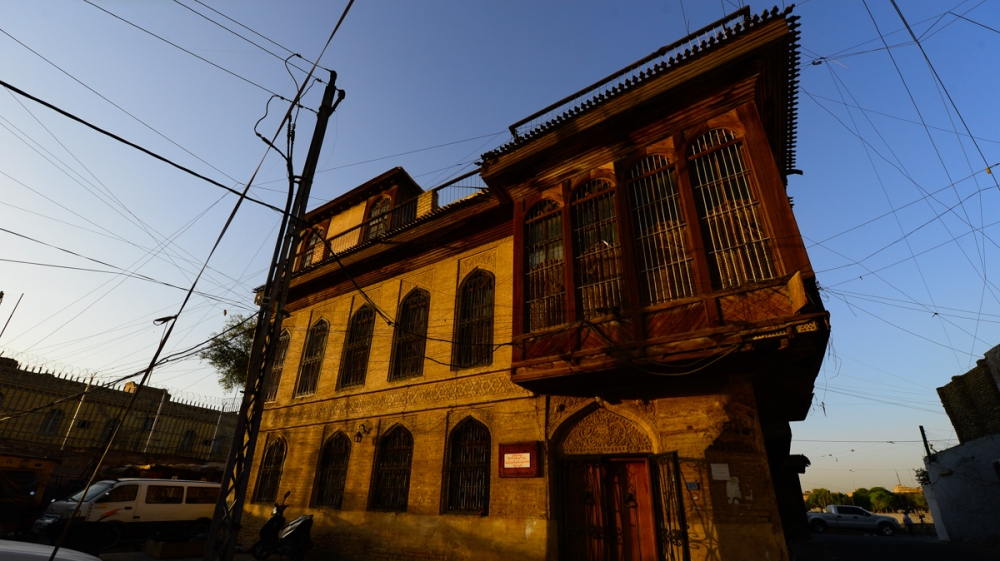
“It will be crowded,” acknowledged Qabs Kana’an, who moved here from Baghdad’s Waziriya neighbourhood in 2019. But the benefit of 24-hour electricity, a sense of security and recreational areas for the children outweighed those concerns. “There is no comparison to my old neighbourhood,” he said.
Asked whether he thought these high rise buildings were the future of Baghdad, the 41-year-old replied: “It’s the reality. The old areas like Harthiya are finished, it’s all stores now.”
It is a reality that is also beginning to dawn on Hind Jameel and Waleed Ahmed, the elderly couple from Harthiya.
They have given up hope that their three adult sons who live abroad will eventually return to Iraq. The house next door, which the couple built in the 1980s for their eldest son, is being sold. Even before the transaction was complete, the buyer demolished the old wooden stairs inside and built up a large part of the garden.
At least for now, the couple’s own house remains a well-guarded vestige, one that bears witness to how much the city has changed.
“I will never sell. This is my home,” Jameel said. “If there’s no home, there can be no homeland.”
![Hind Jameel holds up an old family photo inside her house in Baghdad’s Harthiya neighborhood. All of her three adult sons have left Iraq. [Haider Hamdani/Al Jazeera]](/wp-content/uploads/2020/09/bc65b687cad842b4be3872b2becd706f_18.jpeg)